Sustainable luxury living is redefining the essence of opulence in the 21st century. As environmental concerns gain prominence, affluent individuals and brands are embracing eco-friendly practices that seamlessly blend with the pursuit of high-end living. From eco-conscious architecture and green technologies to sustainable fashion, the integration of sustainability into luxury living is creating a new standard of elegance that respects both the environment and the ethos of sophistication.
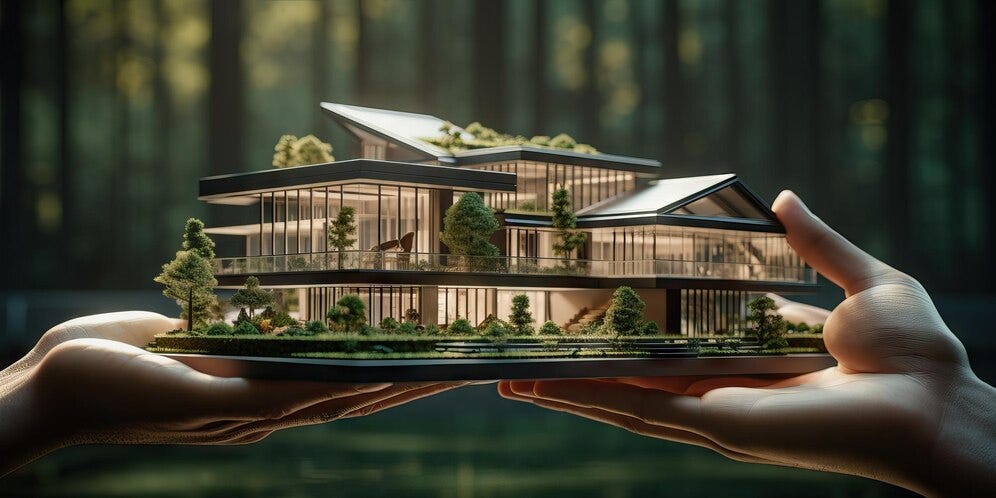
Eco-Friendly Architecture: Redefining Luxury Homes
The Rise of Sustainable Design
The rise of sustainable architecture in luxury homes signifies a significant shift in how we perceive opulence. Traditional notions of luxury, characterized by grandeur and excess, are now being redefined by principles of environmental stewardship and energy efficiency. Sustainable design is becoming a hallmark of high-end residences, combining aesthetic appeal with eco-conscious functionality.
Energy-Efficient Systems
One of the core elements of sustainable architecture is the integration of energy-efficient systems. Luxury homes are increasingly featuring cutting-edge technologies that reduce energy consumption and lower carbon footprints.
- Solar Power: Solar panels are a prominent feature in many luxury homes, harnessing renewable energy to power various aspects of the property. High-efficiency photovoltaic panels and solar thermal systems provide a sustainable energy source while reducing reliance on fossil fuels.
- Geothermal Heating and Cooling: Geothermal systems use the Earth’s natural heat to regulate indoor temperatures. These systems are highly efficient and provide consistent heating and cooling while minimizing energy use.
- High-Performance Insulation: Modern luxury homes often include advanced insulation materials that enhance energy efficiency. These materials reduce heat loss in winter and keep interiors cool in summer, contributing to overall energy savings.
Recycled and Sustainable Materials
Sustainable architecture also emphasizes the use of recycled and eco-friendly materials. High-end builders are incorporating these materials to minimize environmental impact and promote resource conservation.
- Recycled Glass and Metals: Recycled glass and metals are used in luxury home construction to reduce waste and lower the environmental footprint. These materials can be employed in flooring, countertops, and decorative elements.
- Sustainable Wood: Luxury homes are increasingly using sustainably sourced wood, such as bamboo and reclaimed timber. These materials are not only environmentally friendly but also add a distinctive character to the home’s design.
- Green Roofs and Living Walls: Green roofs and living walls are innovative features that enhance a property’s environmental credentials. These elements provide natural insulation, reduce stormwater runoff, and support biodiversity by creating habitats for plants and wildlife.
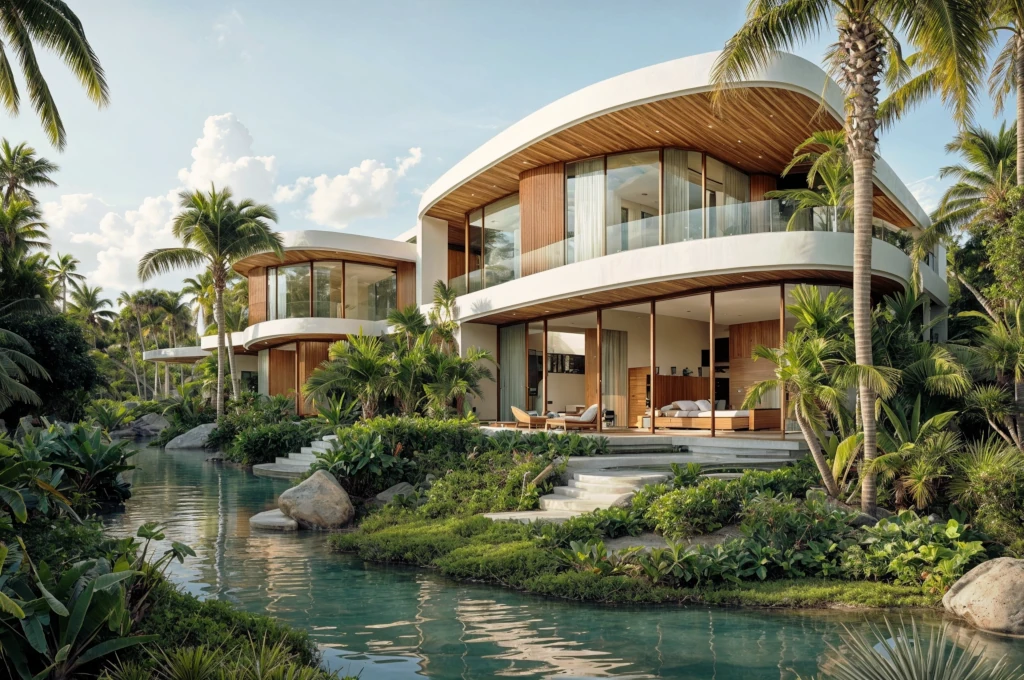
Integration with Natural Surroundings
Modern luxury homes are designed to harmonize with their natural surroundings, promoting a seamless connection between indoor and outdoor spaces. This approach enhances the aesthetic appeal of the home while minimizing environmental impact.
- Site-Specific Design: Architects are focusing on site-specific design to ensure that homes blend with their natural environment. This involves careful consideration of topography, vegetation, and climate to create a residence that complements its surroundings.
- Indoor-Outdoor Living: Large windows, open floor plans, and outdoor living spaces are common features in sustainable luxury homes. These design elements foster a connection with nature and allow residents to enjoy the beauty of their surroundings.
- Native Landscaping: Sustainable luxury homes often feature native landscaping that requires minimal water and maintenance. This approach not only conserves resources but also supports local ecosystems.
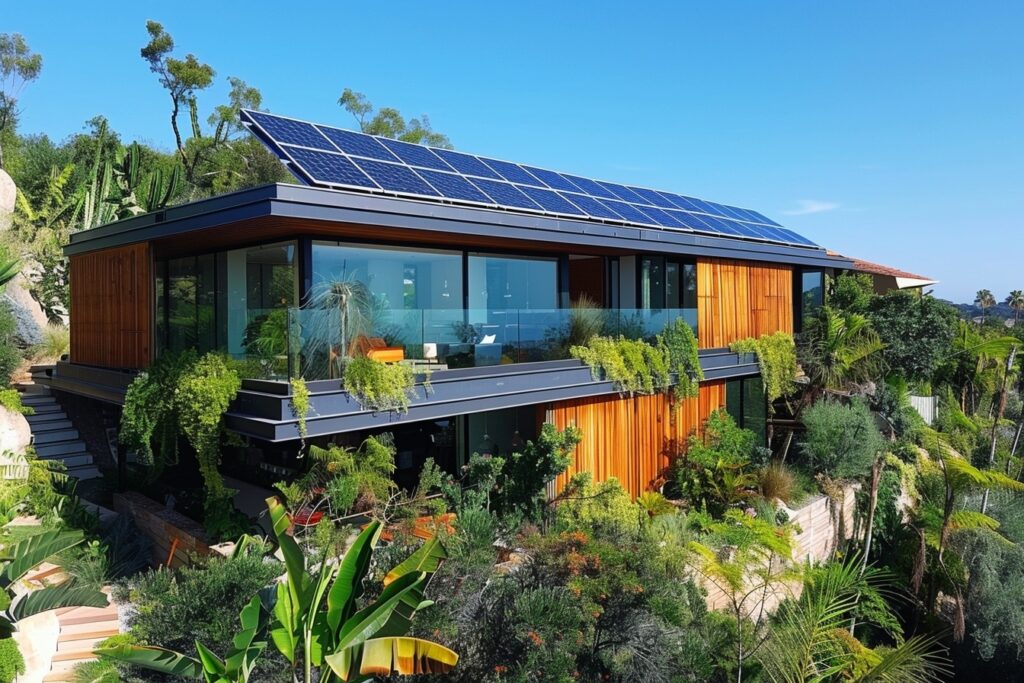
Green Technologies: Enhancing Luxury Estates
Solar Panels and Renewable Energy
The adoption of solar panels is a significant trend in luxury estates, providing a clean and renewable energy source. Solar power systems are increasingly being integrated into high-end properties to reduce dependence on non-renewable energy sources and lower utility costs.
- Photovoltaic Systems: High-efficiency photovoltaic (PV) panels convert sunlight into electricity, which can be used to power the home’s electrical systems. Many luxury homes are equipped with advanced PV systems that maximize energy production.
- Solar Thermal Systems: Solar thermal systems use sunlight to heat water for domestic use. These systems are particularly beneficial for luxury properties with large pools, hot tubs, or extensive water heating needs.
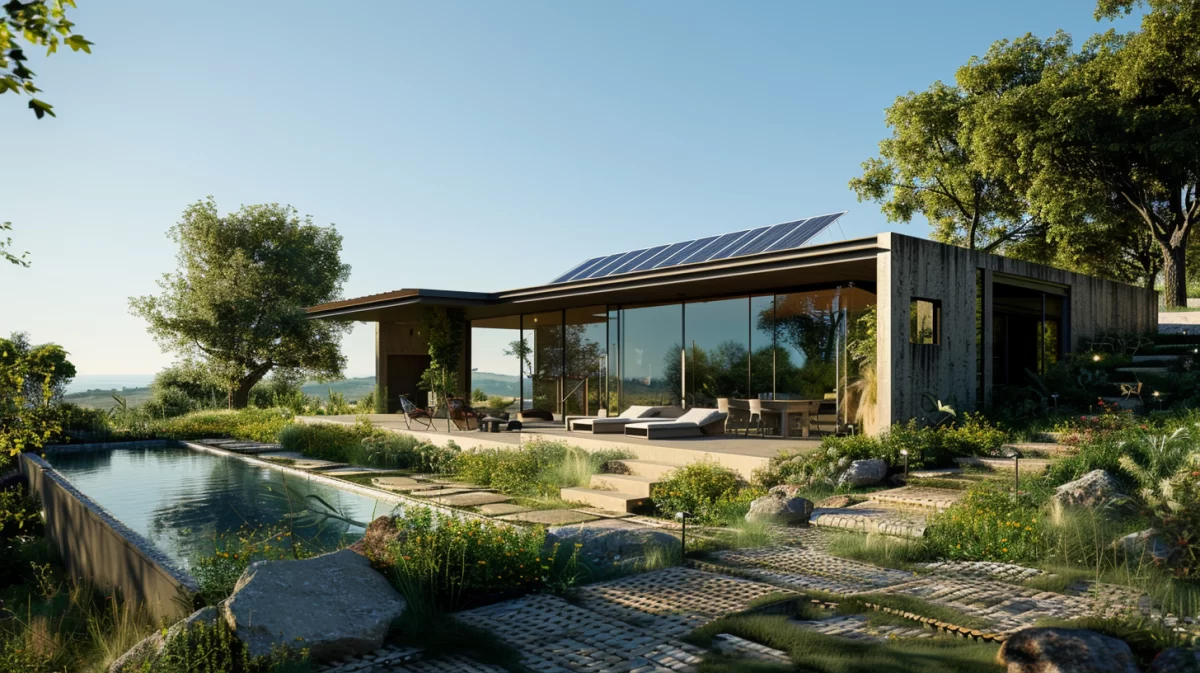
Rainwater Harvesting and Water Conservation
Rainwater harvesting systems are becoming a popular feature in luxury homes, allowing residents to collect and reuse rainwater for various purposes. This practice promotes water conservation and reduces the strain on municipal water supplies.
- Rainwater Collection Systems: Luxury estates are incorporating sophisticated rainwater collection systems that capture and store rainwater from rooftops. The harvested water can be used for irrigation, landscaping, and even for indoor use after proper filtration.
- Greywater Recycling: Greywater recycling systems treat and reuse wastewater from sinks, showers, and washing machines. This practice reduces water consumption and minimizes wastewater discharge.
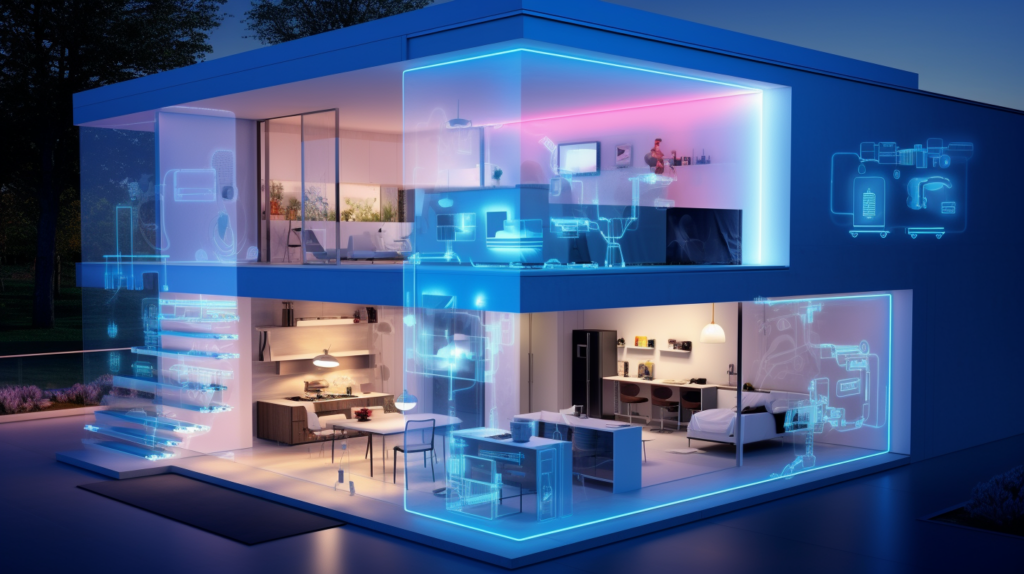
Smart Home Technologies
Smart home technologies are revolutionizing luxury living by providing enhanced convenience, security, and energy efficiency. These technologies integrate seamlessly into high-end properties, offering advanced control and automation features.
- Home Automation Systems: Modern luxury homes are equipped with advanced home automation systems that control lighting, climate, security, and entertainment systems. These systems can be managed remotely through smartphones or tablets, providing ease of use and improved energy efficiency.
- Energy Management Systems: Energy management systems monitor and optimize energy consumption within the home. These systems can analyze usage patterns, adjust settings for maximum efficiency, and provide real-time feedback on energy consumption.
- Smart Irrigation: Smart irrigation systems use weather data and soil moisture sensors to optimize water use for landscaping. These systems ensure that plants receive the right amount of water while minimizing waste.
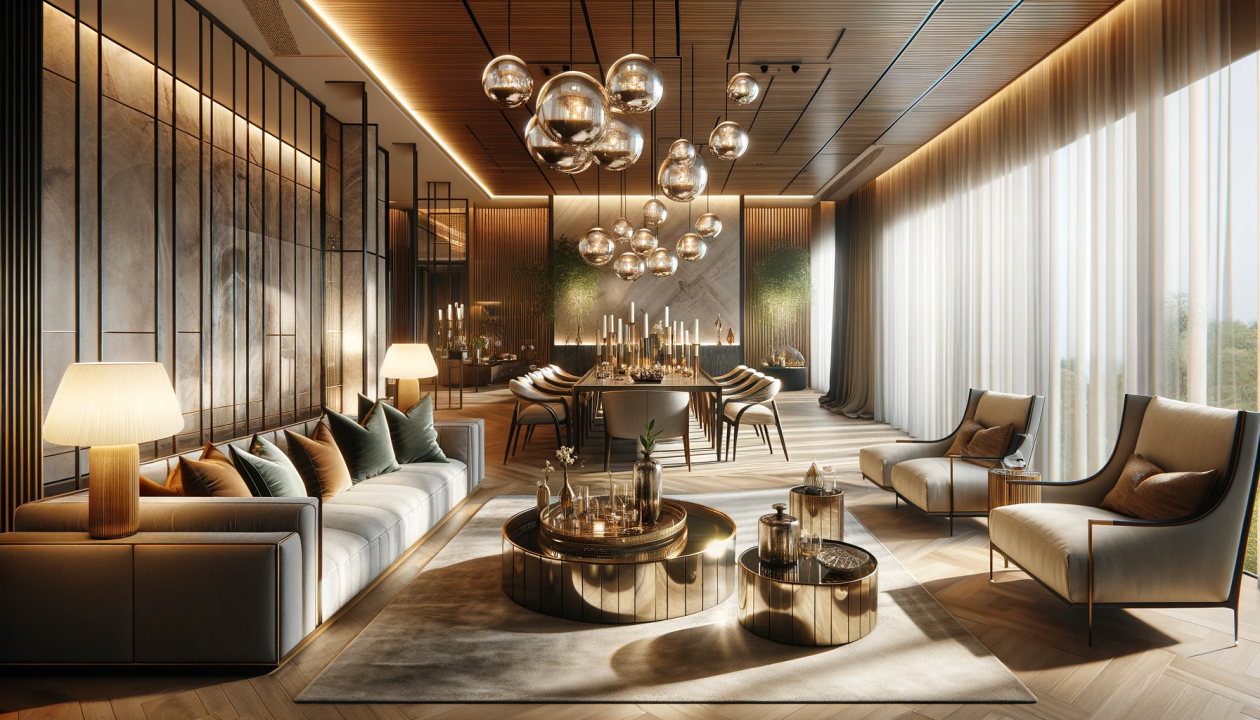
Luxury Fashion: Embracing Sustainability
Organic Materials and Ethical Sourcing
Luxury fashion is undergoing a transformation as high-end brands embrace sustainability. The use of organic materials and ethical sourcing practices is becoming increasingly prevalent in the fashion industry, reflecting a growing awareness of environmental and social issues.
- Organic Fabrics: Luxury brands are incorporating organic fabrics, such as organic cotton, hemp, and bamboo, into their collections. These materials are produced without harmful chemicals and pesticides, reducing their environmental impact.
- Ethical Sourcing: High-end fashion brands are adopting ethical sourcing practices to ensure that their materials are obtained responsibly. This includes fair trade practices, transparency in supply chains, and support for local artisans.
Innovative Sustainable Practices
Luxury fashion brands are also exploring innovative practices to further enhance their sustainability credentials. These practices include the use of recycled materials, circular fashion, and eco-friendly manufacturing processes.
- Recycled Materials: Brands are increasingly using recycled materials, such as recycled polyester and repurposed fabrics, in their collections. These materials help reduce waste and minimize the environmental impact of textile production.
- Circular Fashion: Circular fashion focuses on creating garments that can be easily recycled, repaired, or repurposed. Luxury brands are designing products with longevity in mind, promoting a shift away from fast fashion and disposable clothing.
- Eco-Friendly Manufacturing: Sustainable fashion brands are adopting eco-friendly manufacturing processes that reduce water usage, energy consumption, and waste. Techniques such as waterless dyeing and low-impact production methods are becoming more common.

Notable Sustainable Luxury Brands
Several high-end fashion brands are leading the charge in sustainable luxury, demonstrating that elegance and environmental responsibility can go hand in hand.
- Stella McCartney: Renowned for her commitment to sustainability, Stella McCartney uses organic and recycled materials in her collections and promotes ethical sourcing practices. The brand is also known for its transparency and efforts to reduce its environmental impact.
- Gucci: Gucci has made significant strides in sustainability, including initiatives to reduce its carbon footprint and promote ethical sourcing. The brand is also involved in various environmental and social causes.
- Patagonia: Although primarily known for its outdoor apparel, Patagonia has established itself as a leader in sustainable fashion. The brand’s commitment to using recycled materials, supporting fair labor practices, and promoting environmental conservation is exemplary.
Conclusion
Sustainable luxury living represents a harmonious blend of elegance and environmental consciousness. As the demand for eco-friendly practices grows, luxury homes, green technologies, and high-end fashion are evolving to meet the expectations of discerning individuals who value both sophistication and sustainability.
From innovative architectural designs and advanced green technologies to ethical fashion practices, the integration of sustainability into luxury living is creating a new standard of opulence. This approach not only enhances the quality of life but also contributes to the preservation of the planet for future generations.
As the luxury market continues to embrace sustainability, we can expect to see even more groundbreaking innovations and practices that redefine what it means to live luxuriously while respecting the environment.